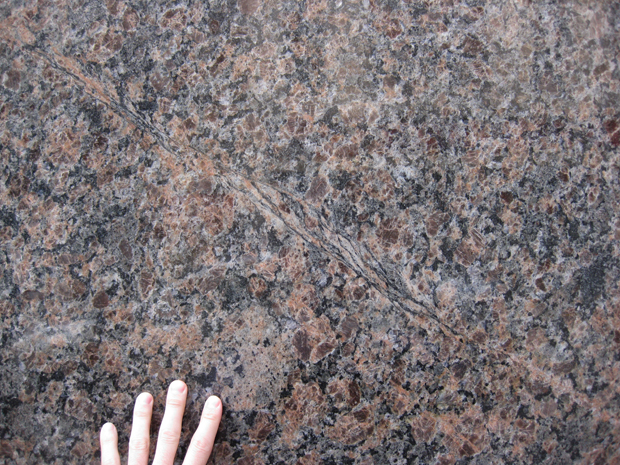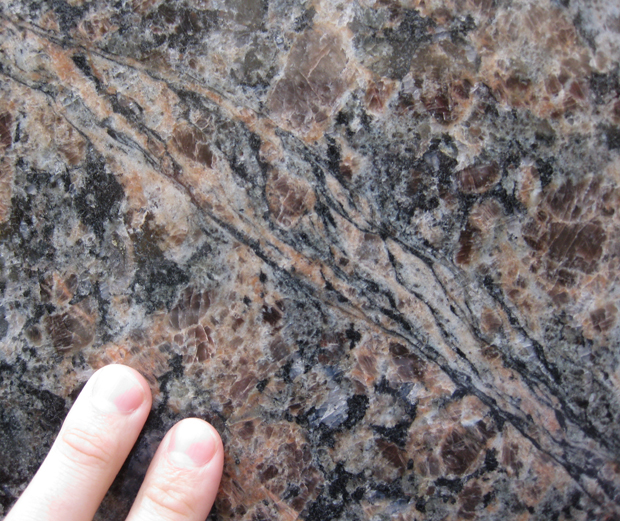Walking back to my hotel after departing the Northeastern / North-central GSA section meeting on Sunday, I noticed this fine shear band cutting across a polished slab of granite on the exterior of an office building in downtown Pittsburgh:


You’ll notice some grain-size reduction along that shear zone, and what looks to be a decent S-C fabric developed, with a sense of motion of top-to-the-left.
If you look at the larger structure, it looks like this central band is a step-over from one more discrete fault to another, and here the strain is more distributed through a lens-shaped body of granite, though still localized within that lens along the dark, mica-rich domains. Note how the larger fault seems annealed in the lower left (of the first picture) with feldspar and quartz.
Anything else you notice here?


This is tempting me to form a band called “Shear in Granite”.
Rapakivi texture developed around orthoclase. We saw a very similar slab (without a shear band) in the elevator of the Double Tree hotel. Great find! I can’t see any signs of metamorphism, which is too bad, because I was hoping to use some ideas from the deformation/metamorphism session showing how reaction rates change dramatically with addition of strain.
There seemed to be plenty of granite in Pittsburgh buildings. I wonder where these slabs were quarried?
Is that biotite mica? And what would cause this in a granite, I thought Granite was an intrusive igneous rock, and it isn’t susceptible to faults, because of the heat and pressure it’s under…Please explain shearing…
Yeah, probably biotite. Granite is intrusive and igneous; but it can fault the same as any other rock whose strength is exceeded by a stress applied to it. “Shearing” is just a general term describing what happens between two big chunks of rock that are moving in different directions. In this case, the upper right side of the granite was moving up and to the left relative to the lower left side of the granite. A zone of deformation developed between the two, accommodating this displacement. Along that zone, the feldspars got crunched up, the quartz got strung out, and the biotites (flaky little plates that they are) got aligned along the slippiest zones.